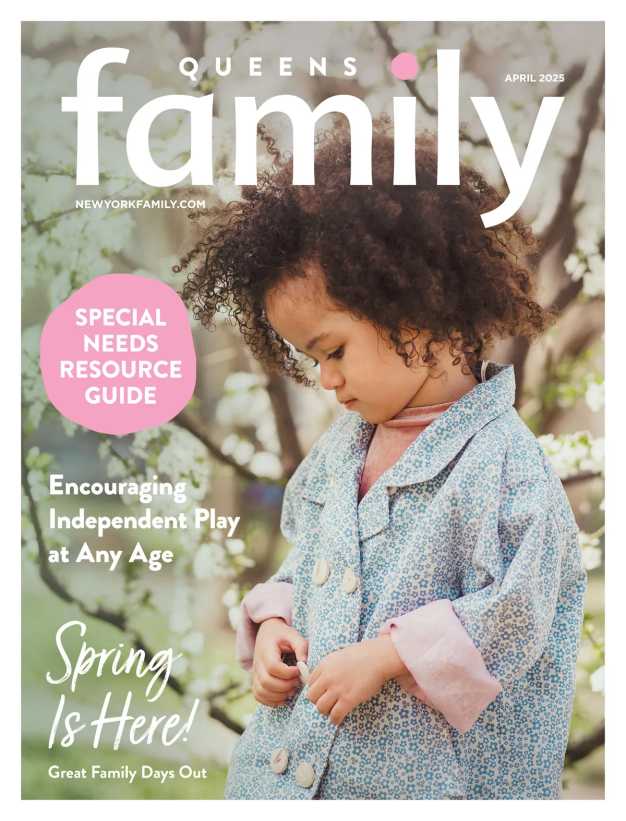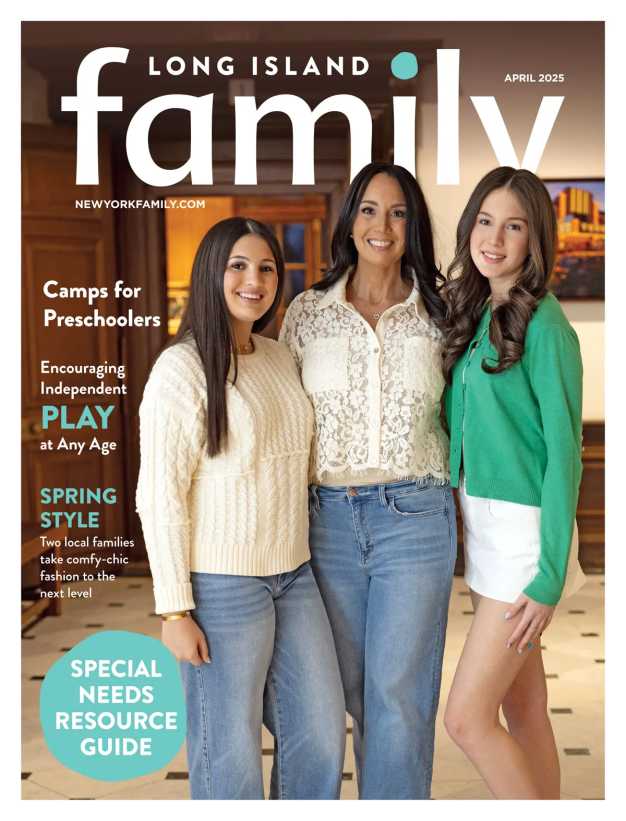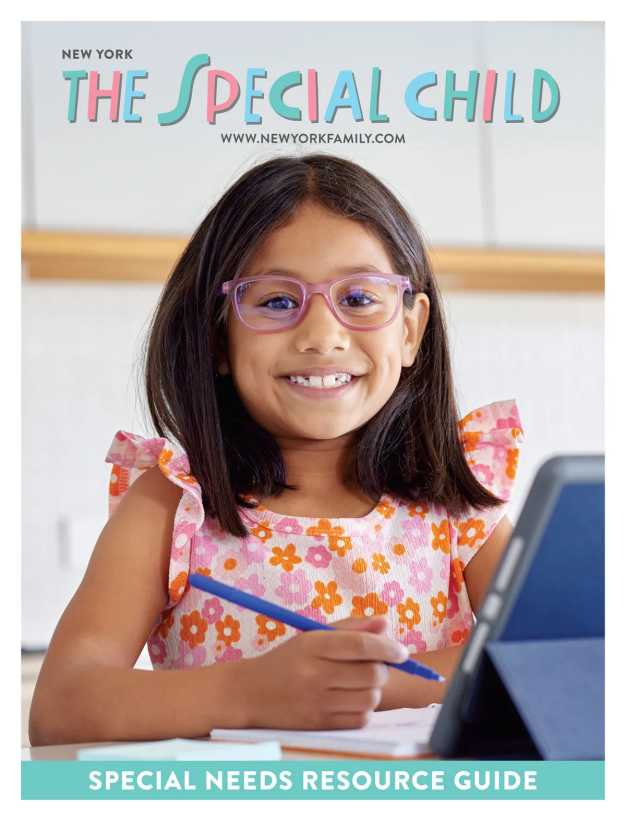
Big Feelings, Small Kids: A New Workbook to Help Children Learn Self-Regulation
Teaching your child self-regulation is a vital skill.
As parents, we’ve all been there … those tough moments when our kids are overwhelmed and spiraling. Big feelings are a normal part of growing up, but knowing how to manage them doesn’t always come naturally, especially for young children.
Developing self-regulation is a key part of becoming a healthy, well-adjusted adult, and it starts in childhood. In their new book, The Self-Regulation Workbook for Children Ages 5 to 8, psychologist Kahlila Robinson, PhD, and social worker Sarah Gerstenzang, LCSW, offer simple, hands-on ways for parents and caregivers to help kids manage emotions, build coping skills, and stay connected. Both authors bring years of experience working with NYC families, and their approach is grounded, practical, and supportive.
“One of the best ways for kids to learn to regulate their feelings is to feel them.”
“Generally speaking, a good sneeze can be relieving; the tension that builds up is released, and we can breathe more clearly. Sometimes, a healthy, robust sneeze just needs to take over. We can apply this same principle to the expression of feelings in children,” Dr. Robinson explains.
Psst… Check Out Helping Kids with Grief: Expert Tips for Parents
“There is a deep importance to the full-bodied, complete, and utter expression of feelings in children. One of the best ways for kids to learn to regulate their feelings is to feel them.”
The workbook is full of easy-to-use activities and tools designed to help children work through tough moments, whether they’re dealing with frustration, anxiety, or just everyday stress. It’s meant to be used together, so kids and adults can sit down side by side.
We’ve included an excerpt from the book below so you can see how it works—and how it might be useful in your own home.
Co-Regulation With Words
Calming a child during a meltdown is very difficult, and you should not expect a child of this age to calm down right away. This is when you have to help them ride a wave of emotion as best you can. This is also when being patient, calm, and firm about physical boundaries is most important. These phrases support a child’s regulation in the moment of an intense emotional upset because they allow a child to feel understood.
“You wish…”
- you wish you could wear the shoes that you want instead of the shoes I am giving you to wear.
- you wish we could stay up all night and never go to bed!
- you wish X or Y were different.
“I hear you” or “I understand” or “I get it.”
- Child: I can’t stand broccoli!
Parent: I hear you.
- Child: I am afraid to sleep without my missing stuffie!
Parent: I understand.
- Child: I really wanted to go to the park today!
Parent: I get it.
Other helpful responses:
- How can I help?
- It’s okay to feel sad.
- We can handle this.
- Let’s slow down.
- Let’s get you a drink of ice water.
- I know you are very upset. Let’s sit on the couch together.
- Add your own:
Co-Regulation Without Words
Sometimes it is best to use no words at all! Just your calm physical presence is enough to help your child calm themself.
If your child is in a safe space, you can:
- Sit nearby (many kids do not like to be cornered) and deep-breathe.
- Focus on your own thoughts: My child is just feeling upset. I can give them some space and some time.
- Rub your child’s back or feet (if welcome by the child).
- Offer your eye contact and full presence.
- Come down to your child’s level and place a hand on their chest.
- Listen without offering any advice.
- Stay calm yourself (see Parent Self-Regulation Strategies in chapter 8).
- Use mmmhhhs and nod your head.
It can also be helpful to just start walking, as children this age will usually follow you. If you have access to outside space, walking outdoors is wonderfully co-regulating. Eventually, you might calmly take your child’s hand.
Interventions For Specific Situations And High-Emotion Moments
Handling Outbursts In Public Spaces
Staying calm is always the goal. This way you show your child how to handle a challenging situation without losing your cool, as well as display your own steadiness in relation to their storms. When your child has an outburst, remember these tips:
- Keep you and your child in a cocoon. Keep your focus on yourself and your child and imagine a glass dome around you both that makes you invisible and is also soundproof!
- Keep in mind that adult passersby have either been there before and have empathy for you, feel supportive of you and your child, and/or hope that you can de-escalate the situation.
- For those adults you feel judged by, know that you are the only one walking in your shoes. Stand firm in this perspective.
- Internal script/How to talk self through it: “I am doing the best I can. Nothing terrible is happening to me or my child. I am just feeling self-conscious.”
- Try not to shame yourself or your child.
- Come down to your child’s level, use a soothing tone of voice, stay calm and firm about physical boundaries, and use your go-to strategies for co-regulation.
- Use repair when some or all of the above has gone awry.
When you are with family or friends who are judgmental, try these tips:
- Prepare ahead of time. Send a text to your family member: “Your grandson is really tired today. He might have a meltdown. It would be really helpful if you let me handle it.”
- Have a phrase that works: “I got this. We can talk more later!”
- Move to a private place: “We will see you back here in 10 minutes.”
What To Say/Think/Do After Losing Your Cool With Your Child
Please see our section on the importance of repair with your child. Here is some guidance:
- First, provide repair for yourself. You can say, “Parenting is a difficult job that I do mostly well. Good parents can still make mistakes. All healthy relationships have moments of rupture and repair.”
- Then, repair with your child. Here are some simple steps to guide a repair:
- Notice when you have calmed enough and have started to process your anger, shame, or guilt.
- Consider what you would like to say to your child.
- Say “I’m sorry” and link the apology to your behavior.
- Offer a hug, high-five, or back rub if accepted.
- Offer your child a chance to respond and share how they feel.
- Be brief! Try not to talk too much or you may end up overexplaining, mistakenly blaming the child, making excuses, etc.
Notice if you are often having to make repairs. And if so, why?
Do’s
- Engage in a repair as soon as possible.
- Address the behavior or actions that you want to repair.
- Ask your child if they have questions or want to express their feelings about the rupture.
Don’ts
- Blame the child for your behavior (I got too angry because you made me upset).
- Expect your child to forgive/feel better.
- Force closeness or joke around.
Parent Self-Regulation For Intensive Situations
Here we pull together all of the de-escalation and parent self-regulation strategies we have already discussed for easy reference:
- When you feel that you’re escalating, one of the best strategies in these moments is to do nothing (when you are surrounded by bricks, stand still!).
- Take some time to regroup. If you can, let your child know you need a moment to calm yourself and that you will be back.
- Pass the Baton: If another calm adult is present, see if you can trade places for a moment, letting that adult know you need some time to regulate.
- Coach yourself with self-talk:
- My child is having a hard time; it’s temporary.
- My only goal is to remain calm.
- I can get through this.
- My child’s tantrum will pass as I remain calm.
- My child and I will ride out this tough moment.
- Doing nothing right now is my best option.
- I am doing the best I can.
- Nothing terrible is happening to me or my child. I am just feeling self-conscious.
- Say to yourself, “My anger in this moment is not worth harming the relationship with my child.”

Excerpted from The Self-Regulation Workbook for Children Ages 5 to 8 by Kahlila Robinson, Ph.D. with Sarah Gerstenzang, LCSW. Copyright © 2025 Ulysses Press. Reprinted with permission from Ulysses Press. New York, NY. All rights reserved.
Psst… Check Out Helping Kids Make Sense of Today’s News: Expert Advice from Dr. Irina Gorelik



















